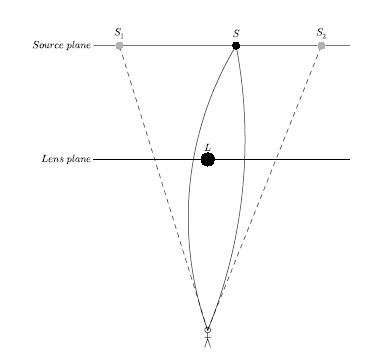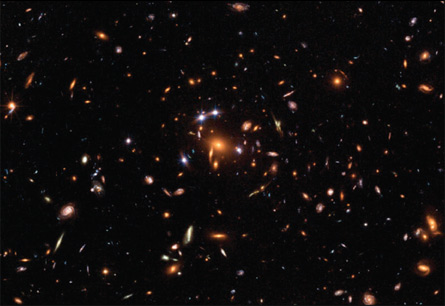Accidental astrophysicists
They started with algebra and ended up learning about gravitational lensing
- More than 2 years ago
Dmitry Khavinson and Genevra Neumann didn’t know anything about astrophysics. They were just doing mathematics, like they always do, following their curiosity. In 2004, they posted a new result, an extension of the fundamental theorem of algebra, on arXiv.org, a preprint server.


Five days later, they received an e-mail. Congratulations, it said. You just proved Sun Hong Rhie’s conjecture on gravitational lensing.
Gravitational what? Khavinson, of the University of South Florida in Tampa, and Neumann, of the University of Northern Iowa in Cedar Falls, had never heard of it.
So they started a crash course in gravitational lensing. When we peer at stars in the distant reaches of the universe, they learned, we can’t simply believe our eyes. Light can play tricks as it travels across such distances. For example, if a star or other massive object lies near the path between the distant star and us, its gravity will bend the light rays. As a result, that light from the distant star will reach us from two different directions, bending around either side of the massive object — so that a single star looks like two.
And that’s just the simplest case. If the massive object lies directly between the star and us, the star will look like a circle. And if there are a bunch of different massive objects near the path, it can make the star look like many stars. But astronomers weren’t sure just how many images could be created.
Rhie, an astronomer then at Notre DameUniversity in Indiana, thought she knew the answer. She’d found an arrangement of four massive objects that created 15 images, and then she used that same basic configuration to get n massive objects that created the mirage of 5n–5 stars. She was pretty sure that was the maximal possible number of images, but she couldn’t prove it. Even so, she posted what she had on the Internet. “Astronomy is like looking for oil fields,” she says. “You have to dig in the right spot.” She hoped to “dig” in that spot and prove the conjecture herself, but then she ran out of funding, had health problems and left the field.
Still, her conjecture attracted attention. Jeffrey Rabin, a mathematician at the University of California, San Diego heard of it and started looking for a mathematical solution. After he worked on the problem for three months without making much headway, an article on the printer in his department caught his eye. Reading it, his heart sank: others had beaten him to the solution, using totally different techniques. But they didn’t seem to know what they’d done! So he fired off an e-mail to the article’s authors — Khavinson and Neumann.
Khavinson and Neumann had been interested in their problem strictly for mathematical reasons. They were working to extend one of the foundational building blocks of mathematics, the fundamental theorem of algebra, a bit further.
The theorem concerns polynomial equations, those familiar expressions we study in high school. The equation x3+3x2-4x-1=0 is an example. The highest exponent — in this case, 3 — is called the “degree” of the equation. The theorem states that a degree n equation will have exactly n solutions (though some of them may require complex numbers, using the square root of -1).
Khavinson and Neumann extended the result to a more complicated type of equation, called rational harmonic functions. They wanted to know how many solutions this type of equation could have. The answer they got was peculiar: all they could show was that such a function couldn’t have more than 5n-5 solutions, if n was bigger than one. But that number wasn’t related to anything they expected, so they wondered if fewer solutions still were possible. “We checked and rechecked,” Khavinson says, “but then we decided, well, that’s the way life is.”
So they did just what Rhie had done a few years earlier: they posted their result on the Internet. That’s where Rabin’s colleague had found it, leading him to send it to the department printer where Rabin stumbled upon it.
What Rabin realized was that the result was precisely what was needed to solve Rhie’s conjecture. And Khavinson and Neumann got more than just a remarkable application of their work: Rhie had indirectly shown that some degree n equations of this type do indeed have the full 5n-5 solutions.
Khavinson says that Rhie’s argument gives a strict mathematical proof, even though the ideas come straight from astrophysics and would have been nearly impossible to find from a strictly mathematical perspective. They publish an account of the work in the June/July Notices of the American Mathematical Society.
“I’ve been working on math all my life, and this was a once-in-a-lifetime experience, where something I did was relevant in a totally unrelated field.” Khavinson says. “Basic questions somehow find their ways into the bigger picture. I find the whole experience totally extraterrestrial.”







